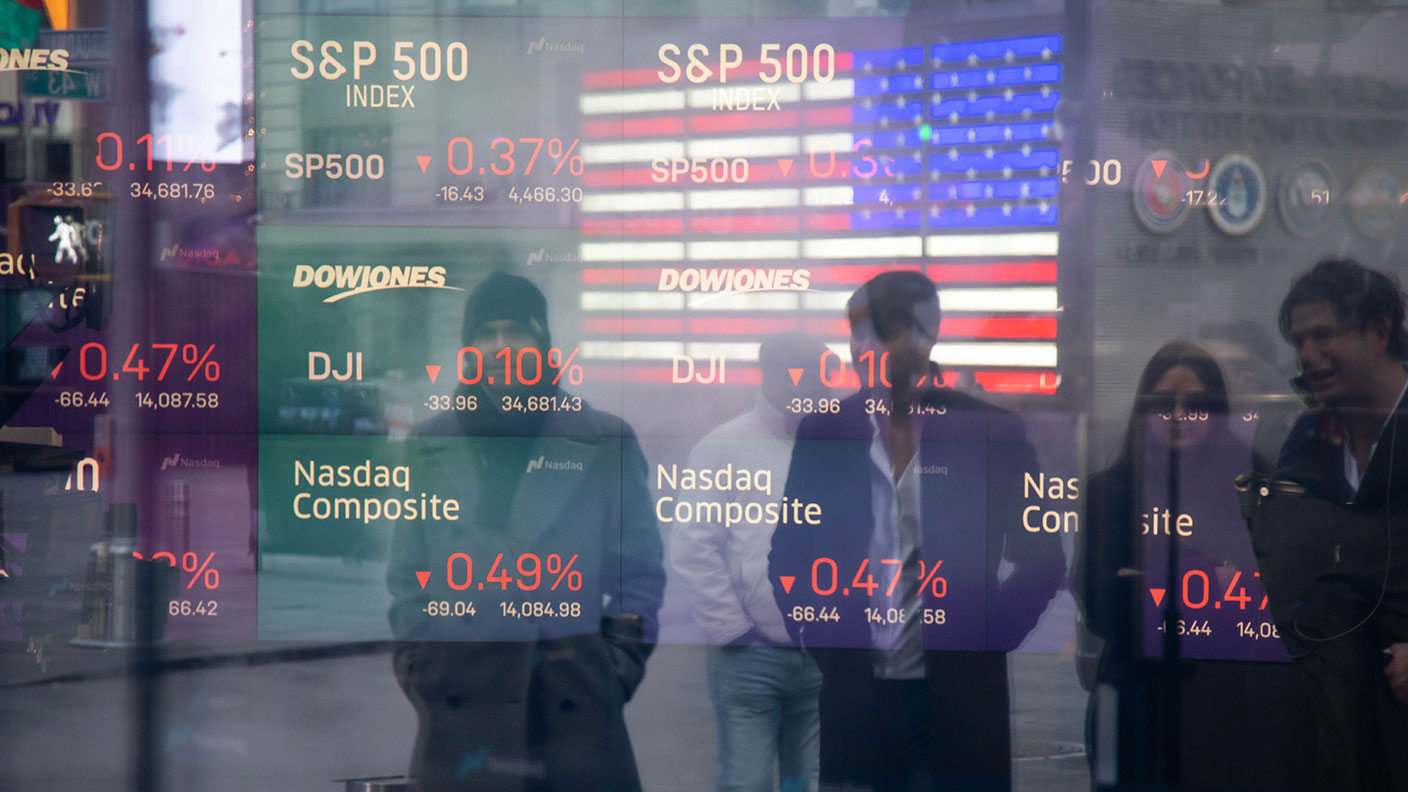Has growth investing had its day? Don’t be so sure
Markets – and “jam tomorrow” growth stocks in particular – continue to crash, with some analysts forecasting a 50% drop or more. But, says Max King, all is not lost for growth investors.

2021 was a frustrating year for the bears of growth investing, whose dire predictions have been wrong for at least five years.
The MSCI World Value index did outperform the Growth index but the margin, 23.9% against 22.5%, was hardly a dramatic vindication.
A sharp fall this year (which gathered some speed yesterday) in growth shares in general and the technology sector in particular has had the bears jumping up and down with excitement.
MoneyWeek
Subscribe to MoneyWeek today and get your first six magazine issues absolutely FREE

Sign up to Money Morning
Don't miss the latest investment and personal finances news, market analysis, plus money-saving tips with our free twice-daily newsletter
Don't miss the latest investment and personal finances news, market analysis, plus money-saving tips with our free twice-daily newsletter
Jeremy Grantham, who has been bearish for nearly ten years, is forecasting a fall of nearly 50% in the US stockmarket.
Is the end of the world nigh for growth investing?
Tech stocks aren’t all as expensive as they might look
The stockmarket sell-off has been widely attributed to rising bond yields, which decrease the value of near-term relative to long-term earnings.
But, as Anatole Kaletsky of Gavekal argues, the fall in the valuation of growth stocks has been disproportionate to the rise in the yield of ten-year US Treasury bonds, which recently reached 1.9%.
Moreover, this increase was universally expected so should have been discounted in valuations; only if the expected peak rises above 2.5%-3% should valuations be undermined and a lower peak is as likely as a higher one.
A better explanation is that the technology-led growth sector is diverging. The stocks with rising earnings, notably the “Magnificent 8” as Ed Yardeni calls them (Apple, Amazon, Alphabet/Google, Microsoft, Nvidia, Netflix, Tesla and Facebook/Meta) did well last year.
The market value of the Mag-8, which account for half the S&P Growth index and a quarter of the S&P 500, rose by 37.5% against a rise of 23.7% for the rest of the S&P 500.
The “jam tomorrow” stocks still making losses, especially those which announced disappointing progress, have crashed. Exercise-bike maker Peloton fell 76% (and another 24% since); digital documents group Docusign trades 61% below its August peak; online car showroom Cazoo is 70% below its February peak; and e-commerce group THG is down 80% over the last year. These businesses usually need to raise new equity just to survive.
The obvious answer is to focus on growth stocks with visible earnings growth, but these do not come cheaply; the Mag-8 trades on 30 times forward earnings, having reached 38 times in early 2020.
Expected revenue growth is 15% and earnings growth 10%, numbers that will have to be exceeded for the shares to rise higher. This does not look demanding as expected earnings growth is the lowest since 2013.
The US technology sector, which includes only three of the Mag-8, may be expensive but Yardeni shows that it is significantly less so than at the height of the dotcom boom. In March 2000, the tech sector accounted for over a third of the S&P 500’s valuation, but its share of earnings peaked at 18% in September 2000. At the start of 2022, the sector accounted for 28.6% of the S&P 500’s valuation, but 22.4% of its earnings.
It’s easy to forget that the Mag-8 were also unprofitable when they listed. Amazon’s share price fell by more than 90% in the tech crash of 2000-2001, since when it has multiplied 500 fold.
Miles Hamilton of Ninety One Asset Management points out that Netflix listed at $1 (after adjusting for subsequent stock splits) in 2001 and now trades at $400, having peaked at $690 last October. Its share price has halved from its previous peak six times, the drawdown once reaching 75%.
So some of those loss-making disasters are likely to become highly profitable behemoths. But which? Perhaps Moderna, down 64% from its September 2021 high or Zoom, down 73% since October 2020?
Don’t be too cynical – there are still plenty of exciting new sectors with huge potential
Fortunately, investors don’t need to decide as they can leave that task to the expert fund managers at Baillie Gifford, Polar Capital, Allianz and Blue Whale to do it for them. These managers will also keep a careful eye on the new technologies and the companies pioneering them to separate the potential winners from the hopelessly optimistic and outright frauds (such as Theranos).
The potential is huge and includes aeroplanes powered by electricity, nuclear fusion, the wireless transmission of electricity and a vaccine for malaria. Progress in some areas has been elusive for decades, while in others it has been remarkably quick.
In 20 years’ time, some technologies that are now pipedreams will be taken for granted while others will still be pipedreams.
In addition, many existing technologies are far from mature. Electric cars account for less than 8% of total global sales and the limits on battery lives are a bottleneck in the adoption of renewable energy and many other technologies. Small-scale nuclear power stations have yet to be rolled out, while the efficiency of solar panels is low and the installation cost high. Incremental advances in pharmaceutical and instrument technology for the treatment of cancer, heart disease and senile dementia have much further to go.
There is no shortage of opportunities for advances in new technology so fortunes will continue to be made and lost. The question is not whether it will be right to invest in growth companies, but when.
The current correction in valuations could go further, but it is as well to remember Nathan Rothschild’s explanation for his investment success; “I never buy at the low and I always sell too soon.”
If the yield on ten-year US Treasuries rises not just to 2.5% or 3% but to 5% or higher, all bets will be off and growth shares, along with the rest of the market, will fall significantly further. This is what the bears are hoping for, but its likelihood is steadily declining; the bad news about inflation is common knowledge and should be discounted in the market.
Even, then, don’t expect the bears to ever change their minds. In late 2008, the S&P 500 index bottomed at 666, but Albert Edwards, the highly-regarded strategist at Societe Generale who had predicted the crash, was targeting a low of 400. He kept to that target for years while the market recovered. The index, around 10% down from its peak, now stands at around 4,350.
Get the latest financial news, insights and expert analysis from our award-winning MoneyWeek team, to help you understand what really matters when it comes to your finances.

Max has an Economics degree from the University of Cambridge and is a chartered accountant. He worked at Investec Asset Management for 12 years, managing multi-asset funds investing in internally and externally managed funds, including investment trusts. This included a fund of investment trusts which grew to £120m+. Max has managed ten investment trusts (winning many awards) and sat on the boards of three trusts – two directorships are still active.
After 39 years in financial services, including 30 as a professional fund manager, Max took semi-retirement in 2017. Max has been a MoneyWeek columnist since 2016 writing about investment funds and more generally on markets online, plus occasional opinion pieces. He also writes for the Investment Trust Handbook each year and has contributed to The Daily Telegraph and other publications. See here for details of current investments held by Max.
-
 Top 10 locations for buyers and renters revealed
Top 10 locations for buyers and renters revealedLondon is crowned as the most popular location for renters and buyers, despite rising costs. But where else are house hunters heading to?
-
 Making financial gifts to loved ones? Write it down or risk giving an IHT bill too
Making financial gifts to loved ones? Write it down or risk giving an IHT bill tooGiving gifts can be a way to pass on wealth and reduce the inheritance tax bill on your estate but do it wrong and you could leave family and friends more than they bargained for.
-
 Halifax: House price slump continues as prices slide for the sixth consecutive month
Halifax: House price slump continues as prices slide for the sixth consecutive monthUK house prices fell again in September as buyers returned, but the slowdown was not as fast as anticipated, latest Halifax data shows. Where are house prices falling the most?
-
 Rents hit a record high - but is the opportunity for buy-to-let investors still strong?
Rents hit a record high - but is the opportunity for buy-to-let investors still strong?UK rent prices have hit a record high with the average hitting over £1,200 a month says Rightmove. Are there still opportunities in buy-to-let?
-
 Pension savers turn to gold investments
Pension savers turn to gold investmentsInvestors are racing to buy gold to protect their pensions from a stock market correction and high inflation, experts say
-
 Where to find the best returns from student accommodation
Where to find the best returns from student accommodationStudent accommodation can be a lucrative investment if you know where to look.
-
 The world’s best bargain stocks
The world’s best bargain stocksSearching for bargain stocks with Alec Cutler of the Orbis Global Balanced Fund, who tells Andrew Van Sickle which sectors are being overlooked.
-
 Revealed: the cheapest cities to own a home in Britain
Revealed: the cheapest cities to own a home in BritainNew research reveals the cheapest cities to own a home, taking account of mortgage payments, utility bills and council tax
-
 UK recession: How to protect your portfolio
UK recession: How to protect your portfolioAs the UK recession is confirmed, we look at ways to protect your wealth.
-
 Buy-to-let returns fall 59% amid higher mortgage rates
Buy-to-let returns fall 59% amid higher mortgage ratesBuy-to-let returns are slumping as the cost of borrowing spirals.
